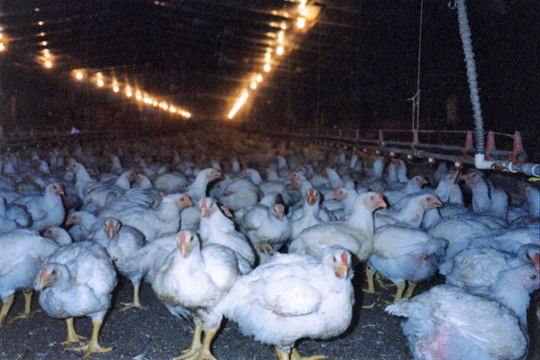
Agricultural News
Chicken Industry Providing Economic Analysis on GIPSA Rule Showing Billion Dollar Impact Over 5 Years to Broiler Business
Tue, 16 Nov 2010 17:48:53 CST
 Proposed new regulations from the U.S. Department of Agriculture will cost the broiler chicken industry more than $1 billion over five years in reduced efficiency, higher costs for feed and housing, and increased administrative expenses, according to a study released today by the National Chicken Council.
Proposed new regulations from the U.S. Department of Agriculture will cost the broiler chicken industry more than $1 billion over five years in reduced efficiency, higher costs for feed and housing, and increased administrative expenses, according to a study released today by the National Chicken Council.
And that doesn't even count the potential costs of litigation, lost export sales, and increased consumer prices, according to the study by FarmEcon LLC, an agricultural economics consulting firm.
"The proposed rule changes are likely to slow the pace of innovation, increase the costs of raising live chickens, and result in costly litigation," wrote Thomas E. Elam, president of FarmEcon. "Higher costs would put upward pressure on chicken prices, and economic theory strongly suggests that consumers would ultimately bear most of these costs."
Rules proposed by USDA's Grain Inspection, Packers & Stockyards Administration (GIPSA) would force changes in the relationship between the nation's chicken companies and the independent farmers who grow chickens under contracts with the companies, and would also require changes in the production and marketing system for cattle and pigs. GIPSA maintains that the changes will have little economic impact, but evidence is accumulating that the cost will in fact be considerable. The FarmEcon study was the first to look at the impact on the meat chicken industry specifically.
"GIPSA's proposed rules would alter long-standing contractual and business relationships between chicken companies and independent growers," Elam wrote. "The changes that are proposed are, in part, designed to broaden the scope of GIPSA authority, reduce the latitude to pay growers based on their performance, limit the ability of chicken companies to seek grower investments, and set new requirements for cessation or reduction of delivery of birds to growers."
"The most likely economic effects would be a reduction of performance-based competition among growers, a reduced rate of capital investment, a reduced rate of efficiency gains, higher chicken prices, and reduced chicken exports," he added.
The cost burden from all identified sources increases over time, Elam wrote, reaching about $337 million per year in 2015. The total identified cost over the first 5 years is about $1.03 billion.
Elam noted that the chicken industry has achieved "exemplary" efficiencies and technological and management improvements that have brought lower costs of production, lower prices for consumers, and increased chicken production and exports. The GIPSA proposed rule would introduce inefficiencies into the system and make it more expensive to produce chickens, he predicted.
For example, Elam wrote, chicken companies do not normally run technical analyses, called "assays," on every load of feed delivered to chicken farmers. Yet the rule could require a feed analysis to be available for each load of feed delivered to a grower. Simply running and tracking the huge number of tests required would cost over $20 million per year, Elam noted.
Less efficient use of the "growout houses" in which chickens are raised would lead to a need for about $150 million over five years in costs to operate additional space, and could cause the chicken companies to consider building their own growout houses, Elam said. More than 95 percent of chickens are now raised in growout houses owned by the farmers rather than the companies.
By changing the system under which farmers are paid by the companies to grow their chickens, the rule would also reduce the incentive for farmers to improve their facilities, Elam said. Without the level of upgrades normally expected, more feed would be needed to produce the chickens, costing an extra $644 million over the years 2011-2015, Elam estimated.
The FarmEcon study is available online- click here to go to the National Chicken Council website to review the study. . It will be filed with the government as part of the industry's comments on the proposed rule.
WebReadyTM Powered by WireReady® NSI
Top Agricultural News
More Headlines...



















